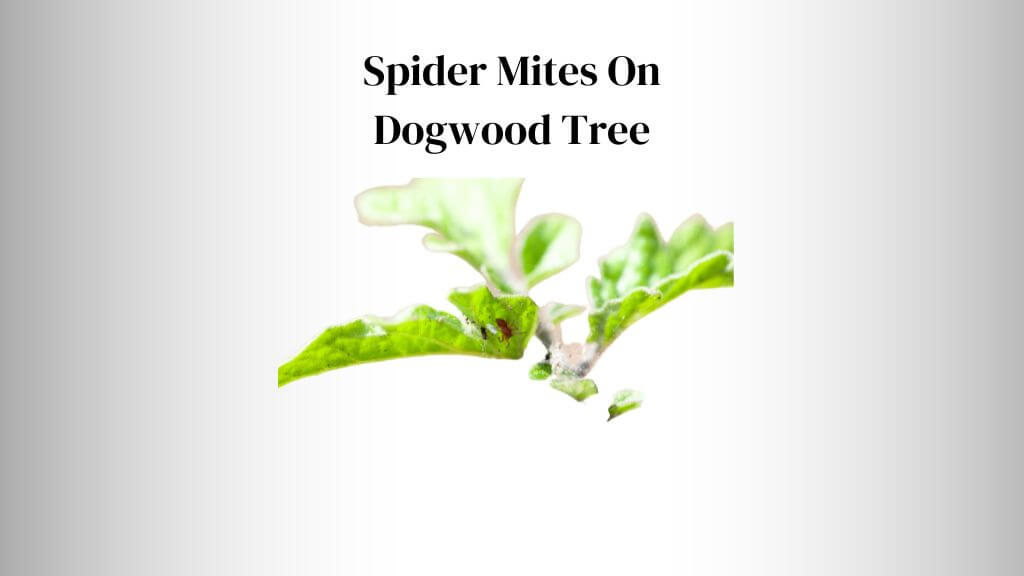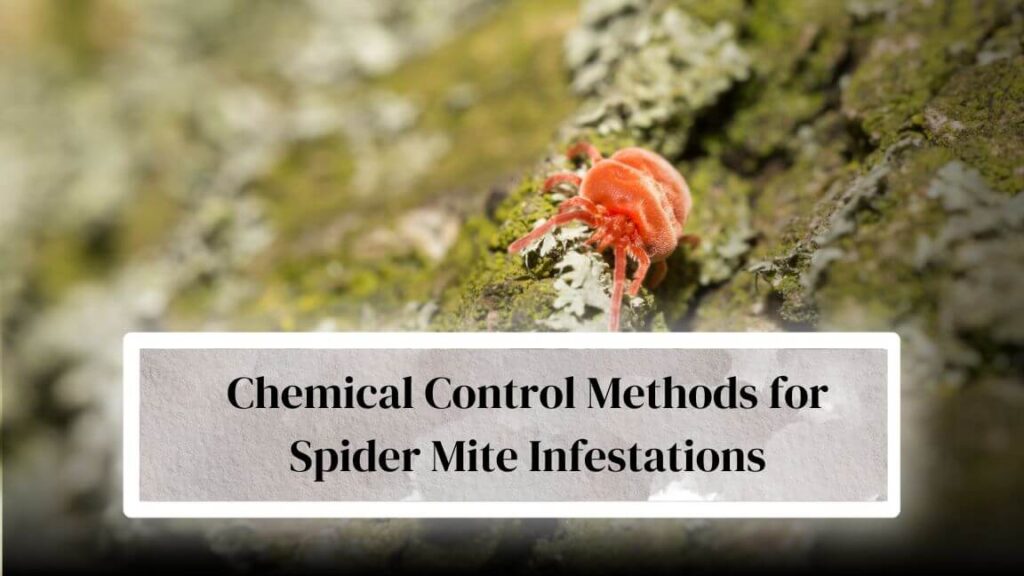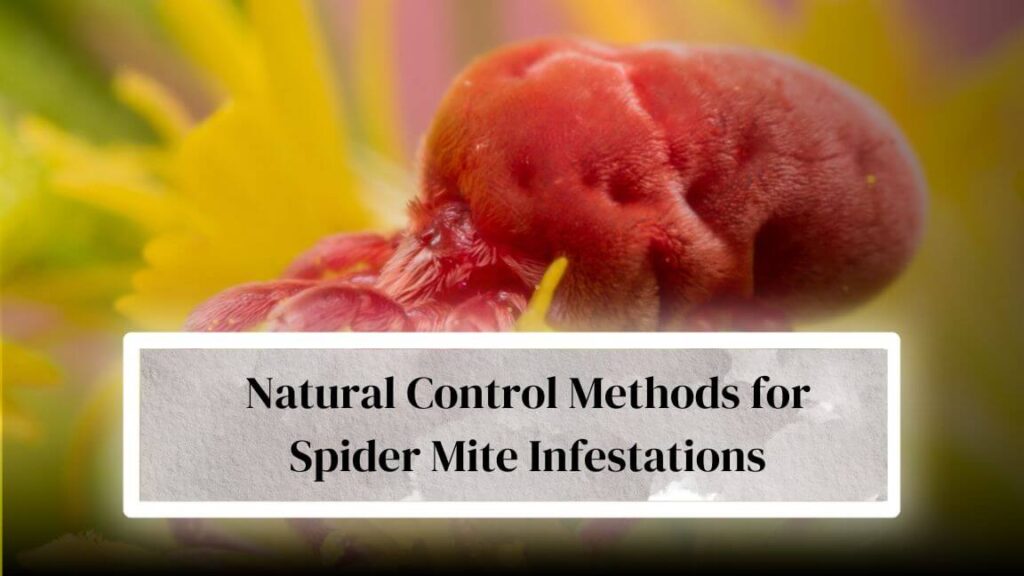
Do you know dogwood trees are prone to pest Infestation and disease? Some common pests you’re likely to encounter are Aphids, dogwood bored, & spider mites on dogwood trees. In this article, I will help you learn how to identify, treat, & prevent spider mites on dogwood trees.
Since dogwood trees are an essential part of many ecosystems, providing food & shelter for various birds, insects, & other wildlife, you should do your best to help them thrive for longevity.
Unfortunately, dogwood trees are susceptible to a variety of pests, including spider mites which are tiny arachnids that can cause significant damage to your trees if left unchecked.
Therefore, without wasting time, let’s explore the signs of spider mites on dogwood trees, the damage they can cause, and how to identify & deal with early infestations.
3 Signs of Spider Mites on Dogwood Trees
Many types of research have shown that spider mites can reduce the growth & vigor of dogwood trees. Spider mites can even kill the tree in case of severe infestation.
Therefore, knowing the signs of spider mite infestation on dogwood trees will keep you ahead of identifying and treating them at an early stage before it gets severe.
- Fine Webbing: Spider mites are known to spin fine webbing on trees’ undersides of leaves & between branches. If you notice fine mist or a thick mat-like structure, spider mites are likely webbing. Depending on the infestation’s severity, you should notice a lot of them.
- Yellow or Bronzed Leaves: Like many insects, spider mites also feed on the sap of dogwood leaves. You’ll likely notice noticeable discoloration on the leaves closest to the ground. You may also notice yellowing or bronzing of the foliage.
- Stunted Growth & Premature Leaf Drop: If your tree is suffering from severe spider mite infestations, it can cause stunted growth or even death of the dogwood tree. Your tree leaves can easily become damaged by spider mite feeding, causing them to drop from the tree prematurely.,
Note: A study by the University of Kentucky found that pests like spider mites can cause significant defoliation & stunting of dogwood trees. It will also lead to reduced flower and seed production.
Causes of Spider Mite Infestation
There can be many causes of Spider-Mites infestation on a dogwood tree, including environmental factors like hot & dry weather, lack of Water, and poor air circulation.
A study by the University of Kentucky found that pests like Spider-Mites like to live & thrive in hot, dry weather conditions. If you provide them with such circumstances l, they can reproduce rapidly.
In addition, excessive use of fertilization or over-fertilization of the tree can also lead to an increased number of spider mites population because over-fertilization usually disrupts the ecosystem’s natural balance.
In particular, You should never overuse nitrogen fertilizers as these can lead to a higher susceptibility to spider mite infestations. Apart from all these, it would help if you never kept your plants and tree in low light or high humidity conditions as this also contributes to Spider-Mites infestations.
Also, avoid overcrowding, which may reduce air circulation, leading to increased humidity levels and contributing to spider mite population growth. You should note that low light conditions weaken trees, making them more susceptible to infestations.
Detecting Spider Mites on Dogwood Trees (5 Tips)
Detecting spider mites on dogwood trees can be very challenging due to their tiny size. You should consider tapping the leaves onto a white paper to check if any mites have fallen. You should also use a magnifying glass.
According to the University of Kentucky, Spider-Mites damage is often categorized by white spots, web-like structures, or tiny yellow spots on the leaves, which later develop into net necrotic areas. A few things that can help you in the early detection and identification of Spider-mites are as follows.
- It would help if you regularly inspect your tree for signs of spider mite infestations
- Make sure you’re keeping the tree healthy and well-maintained through proper pruning & pest control
- Make sure your dogwood tree is getting sufficient Water & nutrients.
- You should give proper space to your trees that promotes air circulation.
- You should never overuse pesticides and fertilizers that may disrupt your lawn’s natural ecosystem.
Controlling Spider Mites on Dogwood Trees
I prefer using natural control methods like neem oil or insecticidal soap for small infestations. However, if the infestation is severe, you might need chemical fertilizers.
Therefore, make sure to consult a professional arborist to help you out with this. It would help if you considered the susceptibility to infestation, your tree size & your personal preferences for using any pest control method for Spider mites on your dogwood tree.
You don’t want to destroy beneficial insects or other surrounding plants using chemical pesticides or fertilizers.
Chemical Control Methods for Spider Mite Infestations

3 Types of Pesticides Used for Spider Mite Control
- Acaricides: You’ll likely find Acaricides at your local store, available in liquid and granular formulations. These are common pesticides that specifically target mites, including spider mites, and can be applied directly to the tree.
- Insecticidal Soaps: if you are looking for a low-toxicity option to control spider mites, consider using insecticidal soaps, often made from natural ingredients. These soaps will disrupt the mites’ outer shells, causing them to dehydrate & die.
- Miticides: if you are looking for a more specific pesticide that is a specialty designed to control spider mites, then you should consider getting Miticides. Like acaricides, Miticides are also available in both liquid & granular formulations, and you can apply them directly on your tree.
5 Safety Precautions You Must Follow
- You must read the label and instructions for using pesticides or fertilizers. Ensure you follow the manufacturer’s instructions to safely use pesticides on your plants & trees safely.
- When applying pesticides, you should wear protective clothing like gloves & a mask.
- To avoid drift, you should avoid applying any fertilizer or pesticides on a windy day.
- If you have treated a particular area of your landscape or your tree, you must keep your kids & pets away from there until it is safe to return. Keep pets and children away from the treated area until it is safe to return.
- Lastly, it would help if you always disposed of unused pesticides & containers properly for better.
Related Topic: Dogwood Tree Allergy: All About Dogwood Allergy Rash & Pollens
Natural Control Methods for Spider Mite Infestations

5 Beneficial Insects for Controlling Spider Mites
- Ladybugs: If you think that the spider mite populations are increasing in your landscape, consider adding natural Predators like ladybugs, who will be happy to help you while promoting pollination.
- Predatory Mites: in some gardener stores, you can find predatory mites that can be introduced to gardens and yards where the Spider-Mites population is needed to be controlled.
- Green lacewings: if you are looking for a natural Predator of Spider-mites, you should go with Green lacewings.
- Assassin bugs: Assassin bugs are also natural predators of spider mites. If the mites population is huge and uncontrollable, you can introduce assassin bugs and green lacewings together.
- Minute pirate bugs: Another great predator that attacks and feeds on spider mites are Minute pirate bugs, which are a natural predator of spider mites.
5 Home Remedies for Controlling Spider Mites
- Neem Oil is an easy-to-access/find natural insecticide you can safely use to control spider mites. Neem oil is an ingredient that most pesticides use because it effectively disrupts spider mites’ hormonal system. This forces mites to stop feeding & reproducing.
- Soap & Water: this idea may sound better but it works well. Spraying your tree with mild soap & Water will suffocate the mites.
- Garlic Spray: You can also prepare a homemade garlic Spray by steeping minced garlic in Water for several hours and then straining the mixture. Trust me; garlic is a natural repellent for many insects, including spider mites.
- Peppermint oil: Another alternative to neem oil is Peppermint oil. However, make sure you mix peppermint oil with Water and then use it as a foliar spray on your tree to repel spider mites.
- Diatomaceous earth: Lastly, another popular natural insecticide is Diatomaceous earth. You need to sprinkle diatomaceous earth on your tree to control spider mites. Diatomaceous earth is known to dry out the mites, causing them to die.
Prevention of Spider Mite Infestations
Since Spider mites thrive in hot, dry conditions, you should avoid doing anything that can contribute to such circumstances. Therefore, you should keep watering your dogwood tree and keep them in a shaded area to prevent infestations.
Additionally, you should pay attention to properly maintaining your garden and around your tree by reducing dust & cleaning. As a regular part of maintenance you should be pruning dead or damaged branches to help prevent spider mites from spreading to healthy parts of your trees.
If you think your tree is already suffering from Spider-mites, you should consider using a strong stream of Water to wash off leaves that can help remove spider mites & their eggs.
Also Read: How To Keep A Dogwood Tree Healthy
Conclusion
After reading this article, you will have no issue identifying Spider-mites and treating them before they spread to other parts of your tree & surrounding plants.
If you notice stunted growth, yellowing of leaves, and web-like structure underneath the leaves, you must use pest control like insecticidal soap or neem oil. I offend recommend avoiding using chemical pesticides because they have the potential to harm beneficial insects also.
Plus, if the infestation gets severe, you should first call your professional arborist before using pest control. If you find the article helpful, then consider sharing it.
Your share is going to help many people prevent Spider-mites on dogwood trees. Do check our other helpful guide on dogwood tree care & management. See you in the next post, till then, take care & goodbye.
